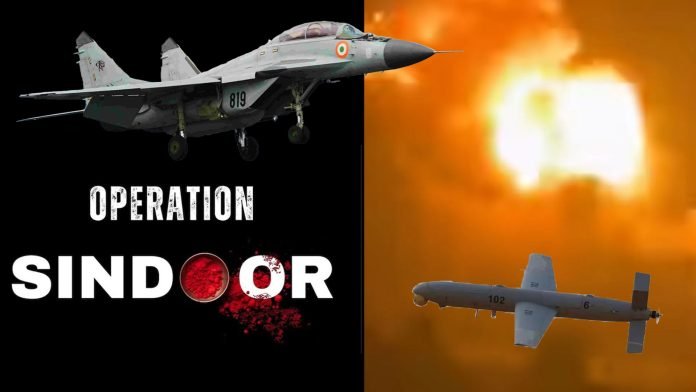New Delhi: The Indian Army during Operation Sindoor extensively employed home-grown military software applications and artificial intelligence tools to accelerate decision-making and enhance battlefield awareness, a senior officer said on October 6, 2025. These capabilities will be further upgraded with a military-specific large language model (LLM) expected to become functional within six months, he added.
Lieutenant General Rajiv Kumar Sahni, Director General of Electronics and Mechanical Engineers (DG EME), clarifying that the tools were not directed at any specific country but developed to give the Army specific capabilities, added that they are meant to be deployed along all of the nation’s borders. “That capability, in equal measure and when required, will be deployed along all our borders,” he said.
The DG EME, speaking at a briefing here, underlined that these tools were indigenously developed and trained using data provided by the Army to meet its operational and doctrinal requirements. He underscored that both the Army and the nation are steadily upgrading their capabilities.
“Our military LLM will be fully functional, post testing and validation, in six months’ time,” Lt Gen Sahni said. He revealed that a common operational, intelligence, and logistics picture was created for the Army during Operation Sindoor using around 23 applications. Explaining that this required collecting and processing a significant volume of information in real time, Lt Gen Sahni added, “AI was used for multi-sensor and multi-source data fusion.”
To collate and analyse the data, indigenous AI tools, including small language models, were used. Lt Gen Sahni said,
“Threat assessment, intelligence analysis, and (battlefield) situation review – what has transpired in the last three hours – was conducted with the help of AI.” He added that heat maps were also generated at the joint operational control centre to support resource prioritisation during the May 7–10 conflict with Pakistan.
During Operation Sindoor, AI tools were also used in precision targeting. Lt Gen Sahni cited one app – developed by the Army’s Directorate General of Information Systems (DGIS) in collaboration with the India Meteorological Department – that provided 72-hour meteorological forecasts covering areas deep into adversary territory. “This helped artillery engage with precision at extended ranges,” he said.
Lt Gen Sahni highlighting the deployment of the SANJAY Battlefield Surveillance System (BSS) along the western borders during the operation, said it enabled the use of AI directly on the battlefield to process data and support decision-making locally, without dependence on distant servers, a capability known as “edge AI”.
Developed by the DGIS, an electronic intelligence collation application, was employed during Operation Sindoor. “All of the adversary’s sensors, their frequency and signature, where these systems have moved, which units they are with… We can track all of that. And we have achieved over 90 per cent accuracy,” Lt Gen Sahni explained.
He pointed out that the AI model was trained using about 26 years of data collected by Indian agencies and armed services and underscored that the “human-in-the-loop” approach was maintained throughout the operation.
“The man behind the machine will continue to be relevant… From a governance and ethical standpoint, while the application can function autonomously, we always prefer to keep a man-in-the-loop – and that will remain the case for now. We are very sure of that,” he said while addressing the ethical aspects of military AI.
Lt Gen Sahni said that “AI as a service” was being introduced across the Army, where an equivalent of every tool available to civilians on their smart devices is also being made accessible in-house to military personnel. “Jigyasa is our own military Generative AI, which ensures that we do not have to use (commercial or civilian AI models) like Perplexity within the Indian Army.”
The Indian Army was focused on building capabilities, without targeting a specific country, and was fully aligned with the Centre’s IndiaAI mission, Lt Gen Sahni said while responding to questions on Chinese support for Pakistan during Operation Sindoor and their respective AI capabilities. “We are well on top of developments in AI,” he added.
The Union Cabinet approved in March 2024, the national-level IndiaAI mission with a budget outlay of ₹10,371.92 crore.





